Continuing the puppy roleplay them from the last post, but with a bit of a twist. It’s a two for one roleplay deal!

This is from the always entertaining Twonks series, created by Steve Nelson. You can find his Merch here.
The beauty of dominant women
Continuing the puppy roleplay them from the last post, but with a bit of a twist. It’s a two for one roleplay deal!

This is from the always entertaining Twonks series, created by Steve Nelson. You can find his Merch here.
Here’s one of the better examples of AI art I’ve seen recently. I actually didn’t think it was AI until I traced it back to the original source – this post by Dora TV.
The common problems of AI generated scenes – wonky backgrounds and oddly shaped fingers/toes – don’t appear to be present. It’s very coherent. The only thing that’s off is her handbag strap, which seems to vanish under her arm. The low part of the left lamppost also looks a bit odd, although that’s minor. Impressive stuff.
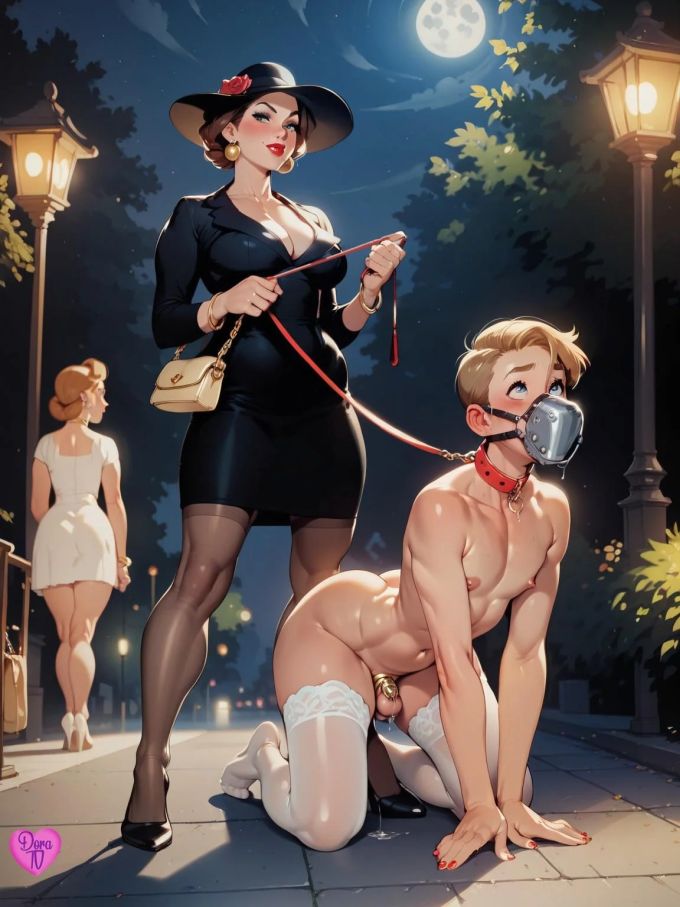
Here’s some sexy artwork to kick off the weekend. It’s by French Artist Cubze. I like the fact she’s using a Magic Wand – those things could drag an orgasm out of a dead person. A caged cock has little chance of escape.

Reddit recently had an ‘Ask Me Anything’ thread featuring a woman whose husband secretly spent $200K on financial domination. I’ve no idea how they validate the authenticity of these kind of posts – Reddit is full of creative writing these days – but it is kind of interesting to pick through.
What struck me from the comments was how often the old cliche of kinks being tied to previous trauma came up. I thought we’d all moved past that a longtime ago. There may or may not be correlation in this case, but there are plenty of people making stupid decisions without kinks, and plenty of kinky people lacking any kind of traumatic background. Hopefully, there is a good therapist involved here to unpack the mess and help them figure it out.
It’s a lot of money to spend, but the financial domination part of it seems like a bit of a red herring. Any kind of regular engagement with professional sex workers is going to get expensive, whatever your kinky proclivities. An average in person session with a pro-domme these days is $800 or more. Do it once a month for 10 years and you’ll be closing in on $100K. I’ve never done the math on my outgoings, but it has got to easily be into 6 figures. Fortunately, I’m an overpaid tech type with no dependents to worry about. In the case of the couple in the AMA, it’s the cheating and dishonesty here that the real issue, not the type of kink.
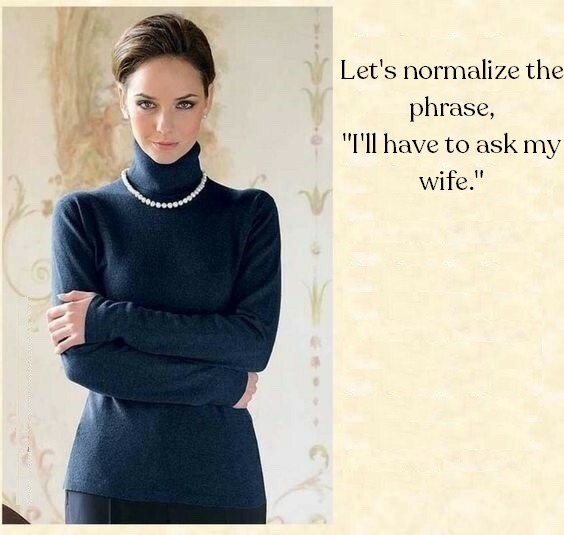 This captioned image has been floating around on various femdom tumblrs. Not sure of the original source. It seemed appropriate here.
This captioned image has been floating around on various femdom tumblrs. Not sure of the original source. It seemed appropriate here.
Is it rude to turn art into porn? To take a shot originally intended as art and present it in a sexual context? To change the artists intentions? Assuming we can judge their intentions of course.
The most obvious cases of this are image captioning – literally putting words into peoples mouths. A good number of these take regular non-pornographic imagery and re-cast them into a pornographic context. However, even posting an image to a themed tumblr or a blog like this changes the interpretation. I sometimes wonder about the rights and wrongs of that.
This image is of Anna Monroy di Giampilieri, shot by Slim Aarons in 1984. He was an American photographer, famous for his images of celebrities and what in those days was known as the jet set. It clearly was intended to capture the wealth, power and beauty of his subject. I think that also makes it work for the Femdom inclined, but wonder how the artist and subject would feel about that.
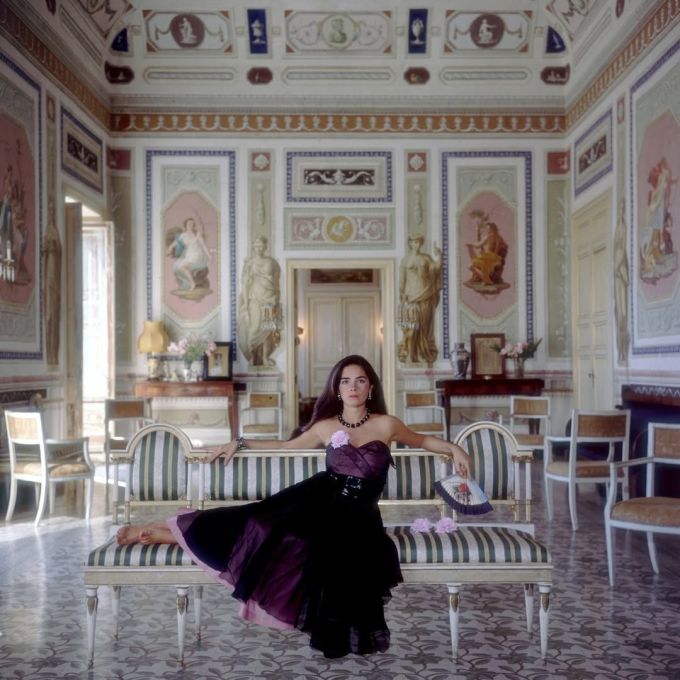
I’ve mused in past posts on the difference between art, erotica and porn. Categorization can be tricky. Fortunately, Mistress Matisse is here with a Bluesky post to clear things up…
I’ve modeled nude for art, and I’ve modeled nude for porn. And here is the way you know which is which.
In art photos:
You don’t wear shoes
You don’t look at the camera
And you don’t smileSo if you’re wearing shoes, looking at the camera, smiling? It’s porn.
NOT doing those things? It’s ART
I think that puts these images from NYCs Mistress Trinity firmly in the porn camp. Smiling – Check. Looking at camera – Check. Shoes – Unclear, but likely Check. Thankfully, while it might be porn, it’s really good fun porn. The best kind.

 You can find Mistress Trinity’s Bluesky feed here.
You can find Mistress Trinity’s Bluesky feed here.
If you ever needed a guide on how not do do a professional BDSM session, this story out of San Diego might be a pretty good template. It features a man who paid an Only Fans model $11K for a BDSM session featuring mummification and breathplay. He was intoxicated, she had zero experience with BDSM, they engaged in very risky kinks and he suffocated to death while she filmed content for her site. There’s not a single good decision made at any point by anyone involved.
What really amazes me about this – besides paying $11K to someone who has no idea what she’s doing – is that the guy had roommates who were at home. I can’t imagine the thought process involved in attempting that kind of crazy scene with a stranger while roommates you barely know are wandering around the house. I guess he was horny and she was greedy. A lethal combination in the circumstances.
If you’re going to listen to your little head and hire people on the basis of hotness rather than experience, at least stick to safe basic scenes. For exampe, I’ve never heard of anyone dying of a foot fetish.
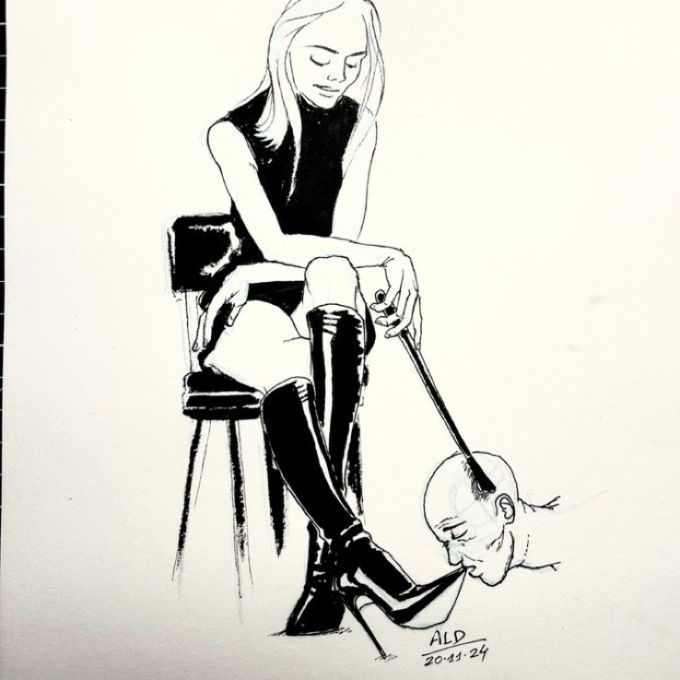
This sexy artwork is by Ald. You can find their Etsy store here.
Writing about Fakir Musafar reminded me of one of the activities he helped bring into kinky culture – flesh hooks combined with suspension. His promotion of it was controversial, bringing charges of cultural appropriation. It’s a ritual used in multiple cultures – including some of the Native American tribes – and a bunch of white people adopting it into kinky culture was understandably not a welcome development for some.
I’ve never done it, but I have had several dommes say they’d love to do a flesh hook scene with me. Not sure what it is about me that creates the desire to suspend me from big metal hooks, but there clearly must be something. I doubt I’ll ever have the combination of nerve and opportunity.
While I might lack the right stuff, I do remember Mistress Matisse writing of her experience of a flesh hook scene. Oddly enough she was a participant rather than a coordinator. You can read about it over three of her old Control Tower articles – part 1, part 2 and part 3. An intense scene.
 This is Mistress Matisse from a recent photograph on her Bluesky feed.
This is Mistress Matisse from a recent photograph on her Bluesky feed.
Film fans in the London area might want to check out A Body to Live In. It’s a film about Fakir Musafar that’s showing as part of the BFI Film Festival. The Guardian has an article on it that also covers some of the biographical detail.
We hear the artist narrating his early experiments in body play – such as during a weekend when he was 17 when his parents were away. Alone, he fasted for two days and restricted his waist with a chain, and clipped his body with hundreds of clothes pegs – an experience he said gave him feelings of belonging and of power. In adulthood, Musafar started throwing self-taught naked “piercing parties”, then starred in “freakshow” performances inspired by circus acts, such as lying on beds of nails in front of audiences as weights were placed on top of him.
He described his gender and sexuality as being ‘in the cracks’ and from the Guardian article and others on him, that seems like a good description. His life and work seems hard to pigeon hole – existing at intersections of art, kink, body modification, gender exploration, ritual, transformation, etc. Growing up in the 1940’s and 50’s in South Dakota he was obviously forced to blaze his own distinctive trail.
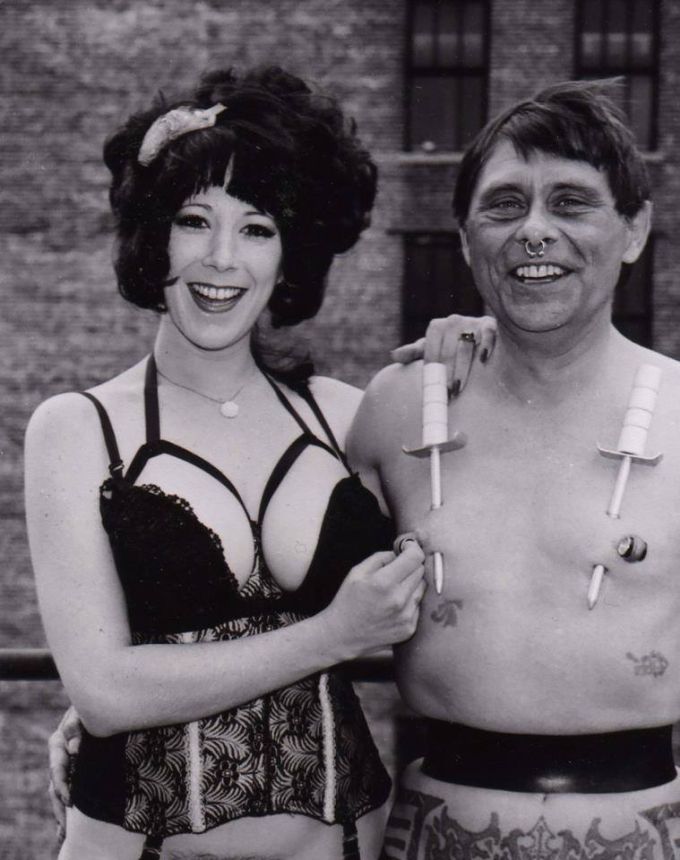 This is Annie Sprinkle with Fakir Musafar, in a shot taken in the early 80s.
This is Annie Sprinkle with Fakir Musafar, in a shot taken in the early 80s.
If you’re interested in exploring age play and similar kinks then I’d point you to this online course running this Thursday (20th). It’s being run by Princess Natasha Strange, who is an experienced player in this area. Here’s a chance to pick up a few tips from her for a small course fee.

This is Princess Natasha Strange pictured in ‘Mother’s Den’ at her Portland play space. I sourced it via her Bluesky feed.